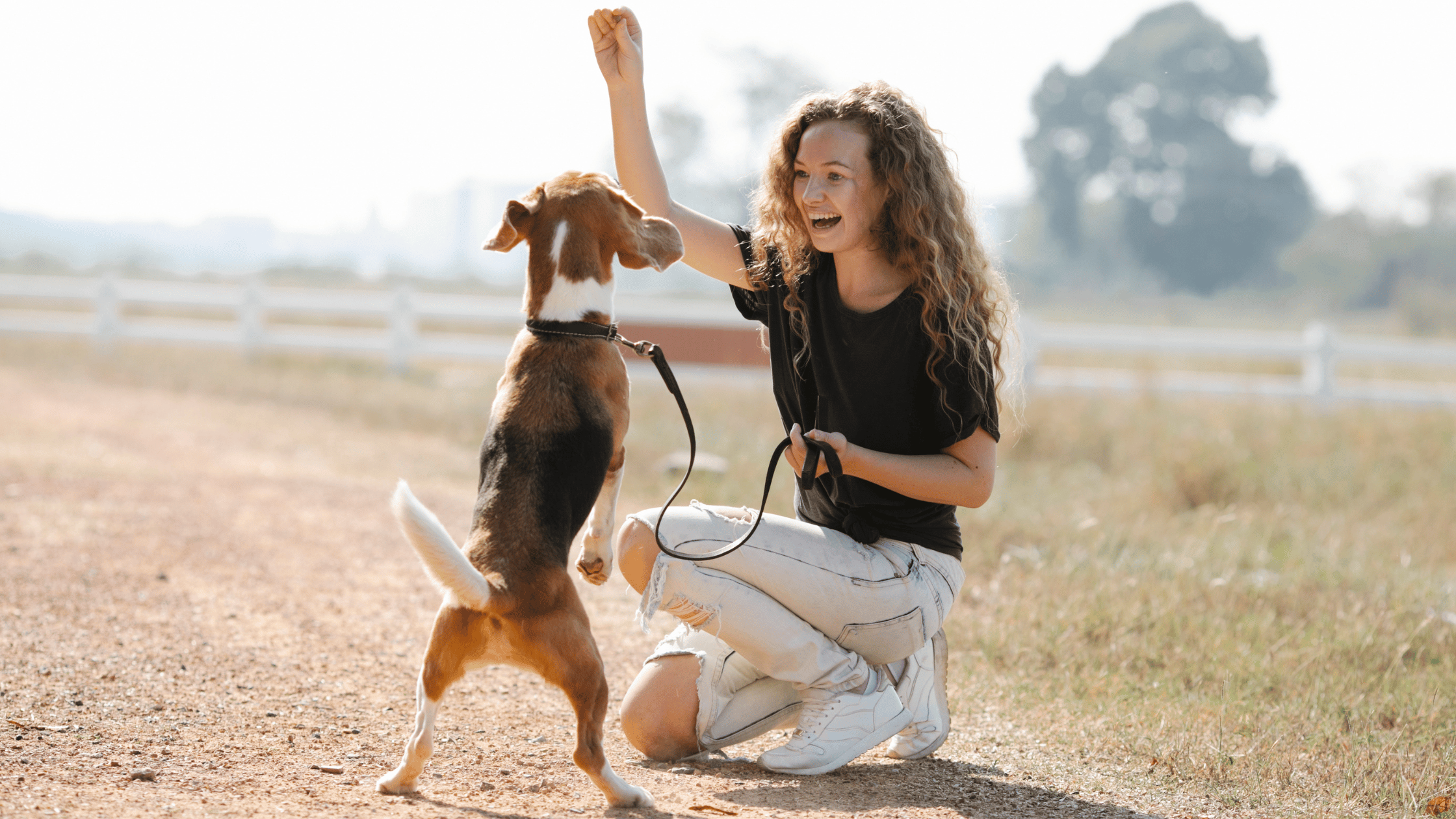Beginner’s Guide to Dog Training as a Hobby: Essential Tips for New Trainers
Considering taking up dog training as a hobby? Learning to train your dog can be a deeply rewarding experience. It offers you countless ways to strengthen your bond with your furry companion.
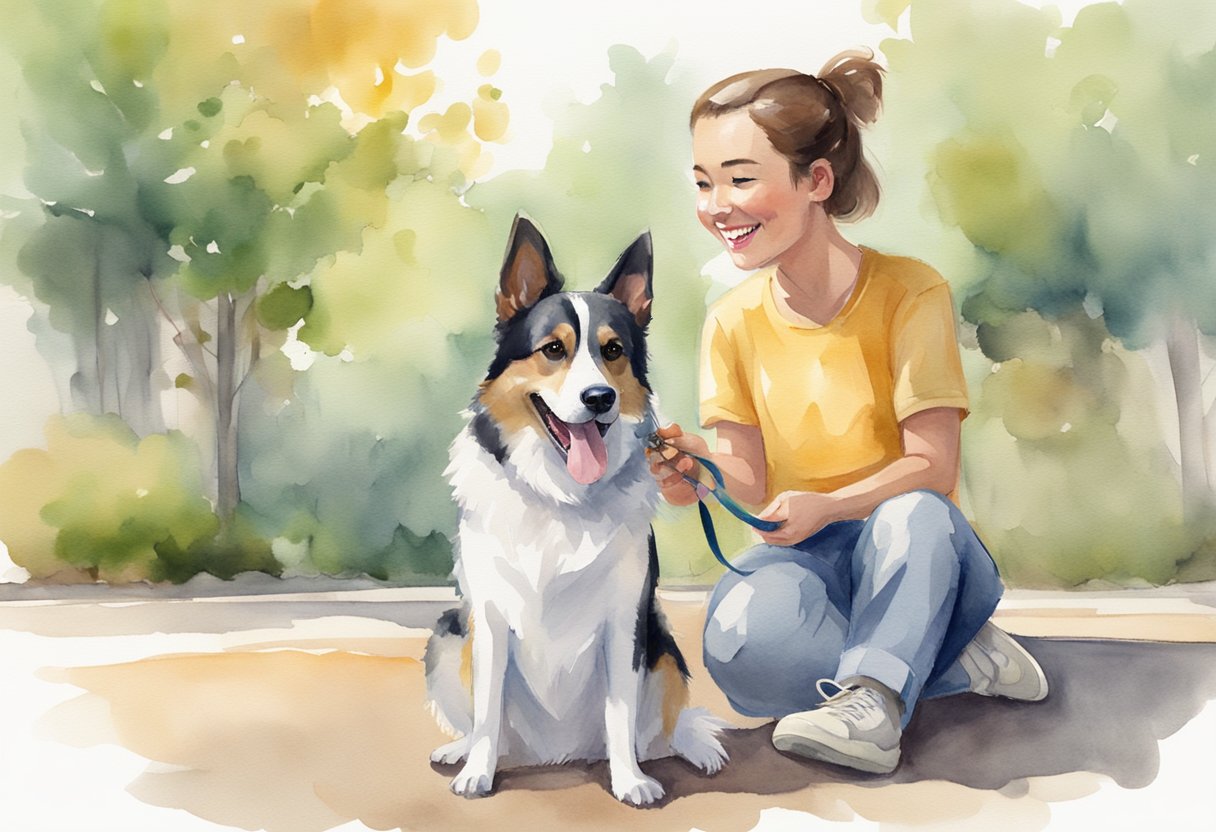
Dog training as a hobby not only brings joy but also enriches your relationship with your dog through customized, skill-building activities.
As you embark on this hobby, you will learn essential techniques like basic obedience, positive reinforcement, and effective communication.
Resources like this basic obedience training guide offer step-by-step instructions to ensure success.
With patience and consistency, you’ll find that training sessions become a cherished part of your routine.
By keeping your training sessions short and engaging, you can maintain your dog’s attention and enthusiasm. Enjoy the process, celebrate the small victories, and watch as your connection grows each day.
This comprehensive guide for beginners will provide you with all the tools you need to get started.
Understanding Your Dog

Understanding your dog involves recognizing their behavior, emotions, and the significance of socialization. You’ll also learn how to identify and address any behavioral problems that may arise.
Dog Behavior Basics
Dogs communicate through a variety of behaviors. Body language, such as tail wagging, ear position, and fur standing up, offers insight into a dog’s emotional state.
Positive behaviors include wagging tails, relaxed postures, and playful bows. These behaviors indicate happiness and excitement.
Negative behaviors, like growling, baring teeth, and stiff postures, can signal fear or aggression.
Dogs also use vocalizations to communicate. Barking can mean excitement or alertness, while whining often indicates anxiety or need.
Take note of how your dog behaves in different environments. Observing this will help you address their needs effectively and ensure they feel safe and understood.
The Importance of Socialization
Socialization is essential for a well-adjusted dog. Exposing your dog to various environments, people, and other animals at an early age helps them develop confidence and reduces anxiety.
Socialized dogs are less likely to exhibit fear or aggression. Positive experiences during walks, visits to parks, or interactions with other dogs all contribute to their comfort with new situations.
Start with controlled environments and gradually expose your dog to busier settings. This controlled exposure helps build their confidence.
Use positive reinforcement, such as treats and praise, to encourage good behavior during social interactions. Consistent socialization activities will significantly improve your dog’s ability to handle new experiences calmly.
Recognizing and Addressing Behavioral Problems
Recognizing behavioral problems early can prevent them from escalating. Common issues include aggression, anxiety, and destructive behavior.
Aggression may manifest as growling, snapping, or biting. It’s crucial to identify triggers, which can range from territorial instincts to fear.
Anxiety often appears as excessive barking, whining, or destructive chewing. Separation anxiety is a common form of this behavior.
Provide a safe space for your dog and consider crate training to alleviate stress. Redirection and positive reinforcement can help correct unwanted behaviors.
If issues persist, consulting a professional trainer or a veterinarian may be necessary. They can provide tailored strategies to address and manage these problems effectively.
Getting Started with Training

To kick off your dog training journey, it’s crucial to create an environment conducive to learning, equip yourself with the right tools, and choose effective rewards to encourage positive behavior.
Setting Up for Success
Creating a conducive environment is fundamental to successful dog training. Start by choosing a quiet, distraction-free area where your dog can focus.
Consistency is key, so ensure you use the same space and materials each session.
Prepare a comfortable mat or blanket for your dog to sit on during training exercises.
Gather all necessary tools such as a leash, harness, and training clicker.
Establishing a routine with specific start and end times for each session helps your dog understand training expectations.
The Essentials of Training Sessions
Keeping training sessions short and engaging is vital. Aim for sessions lasting between 5 and 15 minutes to maintain your dog’s interest.
Structure the sessions with clear, achievable training goals. For example, start with simple commands like “sit” or “stay.”
Maintain a positive reinforcement strategy by rewarding good behavior immediately.
Use a calm, firm voice to give commands and offer praise or a small treat as a reward.
Track progress by taking notes on your dog’s achievements and areas needing improvement. This tracking helps you adjust training techniques as needed.
Choosing the Right Rewards and Treats
Using the right rewards significantly impacts the efficacy of training sessions. Different dogs respond to different types of treats, so it’s essential to identify what works best for your pet.
High-value treats like small pieces of chicken or commercial training treats are often very effective.
In addition to treats, verbal praise and petting can reinforce positive behavior.
For dogs with a low food drive, toys or playtime can serve as excellent rewards.
The key is to reward immediately after the desired behavior, creating a clear link between action and reward.
Using a mix of these rewards keeps training sessions enjoyable and effective, helping your dog progress towards achieving training goals.
Obedience Training Fundamentals

Obedience training lays the groundwork for a well-behaved and responsive dog. Mastering basic commands such as “sit”, “stay”, and “heel” is essential for effective communication and control.
Teaching Basic Commands
Start with simple commands that are essential for daily interactions.
“Sit” is often the first command taught. Hold a treat close to your dog’s nose, then move your hand up, allowing their head to follow while their bottom lowers to the ground. Once they’re seated, reward them with the treat.
“Stay” and “down” are equally important.
For “stay”, ask your dog to sit, hold your hand up like a stop signal, and say “stay”. Gradually increase the duration they remain in position.
For “down”, hold a treat to your dog’s nose, move your hand to the floor, and gently guide them to a lying position with the command “down”.
Consistency is key. Repeat these exercises daily, using positive reinforcement to encourage and reward successful attempts.
Always praise your dog immediately after they perform the desired behavior to reinforce learning.
Beyond the Basics: Advanced Obedience
Once basic commands are mastered, you can move on to advanced obedience training to refine your dog’s skills and reinforce their responsiveness.
Commands like “heel” and “come” come into play here.
To teach “heel”, use a leash and keep treats handy. Start walking with your dog at your side and say “heel”.
If your dog starts to pull, stop and call them back to your side, then resume walking. Reward them when they stay close.
For “come”, make yourself the most exciting thing in the environment. Call your dog’s name followed by “come”, using a happy and encouraging tone.
When they come to you, offer a treat and lots of praise.
Advanced commands improve your dog’s behavior and strengthen your bond. Practice regularly in different settings to ensure your dog responds reliably in various environments.
Positive Reinforcement Techniques

Focus on using positive reinforcement techniques to encourage desired behaviors in your dog. These methods emphasize praise, affection, and timing to shape your dog’s actions effectively.
The Role of Praise and Affection
Using praise and affection is crucial in positive reinforcement dog training.
When your dog performs a desired behavior, immediately reward them with verbal praise such as “Good dog!” or “Well done!” along with physical affection like petting or a belly rub.
This immediate feedback helps your dog associate the behavior with a positive outcome.
Combine praise with treats or toys to strengthen this association.
Dogs are more likely to repeat behaviors that bring them pleasure.
Be consistent with your praise and affectionate responses, ensuring they match the level of the dog’s effort.
For instance, more enthusiastic praise for complex tasks and simpler acknowledgments for routine behaviors.
Understanding Reinforcement Schedules
Timing is essential in positive reinforcement training.
A reinforcement schedule refers to when and how often you provide rewards after a correct behavior.
Start with a continuous schedule, rewarding every instance of the desired behavior, to establish a strong connection.
Gradually shift to an intermittent schedule, where rewards are given sporadically.
This method keeps your dog motivated, as they learn to perform the behavior without expecting a reward every time.
Random reinforcement is highly effective in maintaining the behavior in the long term.
Use a mix of praise, treats, and affection to keep training sessions engaging.
Your timing must be precise—reward immediately after the behavior to ensure a clear association.
This technique fosters a strong bond between you and your dog while promoting consistent and desirable actions.
Addressing Common Behavioral Issues
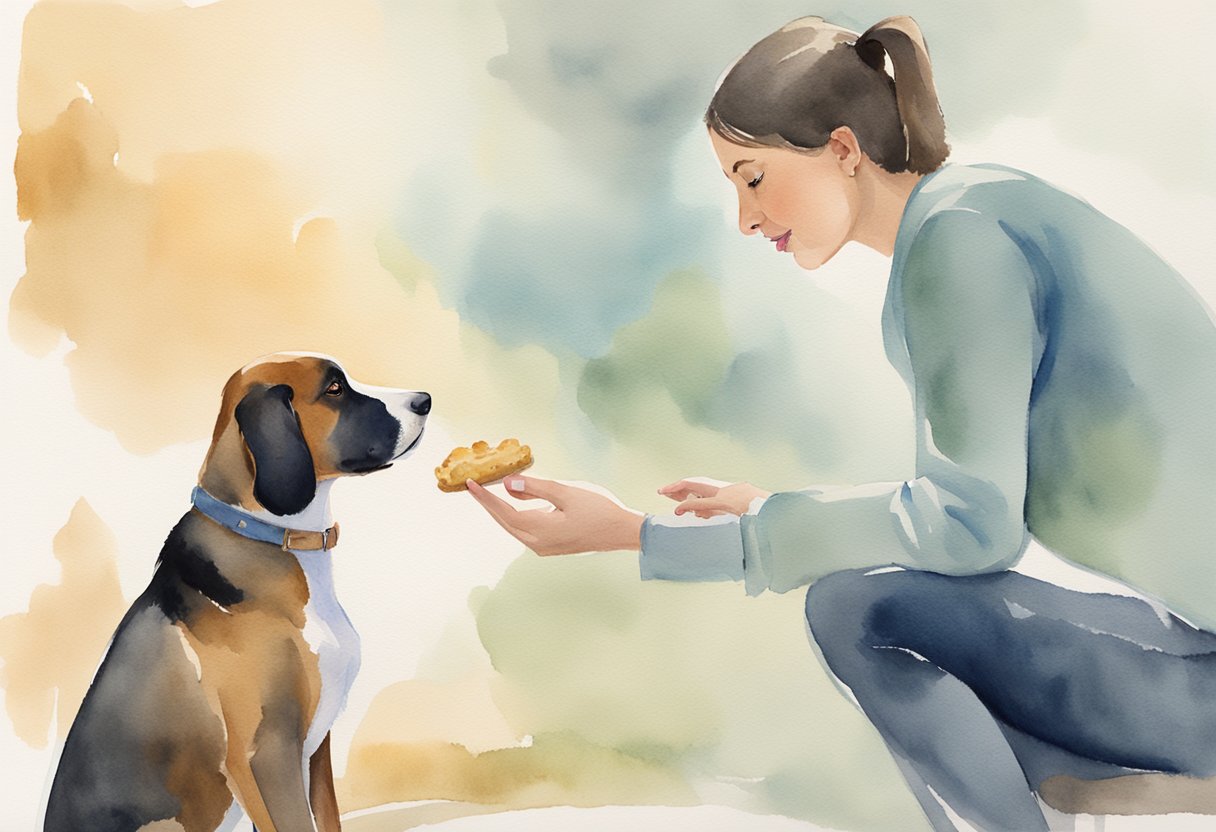
Addressing common behavioral issues in dog training involves effective house training, managing separation anxiety and barking, and preventing leash pulling and jumping on people. These strategies are essential for fostering a well-behaved and happy dog.
House Training Your Dog
House training requires consistency and patience. Start by establishing a regular feeding schedule. This helps predict when your dog needs to go outside.
Take your dog out at the same times every day, such as first thing in the morning, after meals, and before bed.
When your dog successfully goes outside, reward the behavior with praise or a treat.
If you catch your dog eliminating indoors, calmly interrupt them and take them outside.
Avoid punishment, as it can create anxiety and make house training more difficult.
Use a consistent command like “go potty” to signal that it’s time to eliminate.
Accidents are common in the beginning. Clean any indoor accidents thoroughly to remove the scent and prevent repeat behavior.
Patience and consistency are key to successful potty training.
Managing Separation Anxiety and Barking
Separation anxiety occurs when dogs become stressed when left alone. Signs include excessive barking, destructive behavior, and pacing.
To manage this, start by leaving your dog alone for short periods and gradually increase the duration.
Create a positive association with your departure by giving your dog a special toy or treat that they only receive when you leave.
Exercise your dog before you leave to help reduce anxiety.
For barking, identify the trigger.
Some dogs bark out of boredom, while others aim to alert their owners.
To reduce barking due to boredom, provide your dog with mental and physical stimulation through toys and regular exercise.
For attention-seeking barking, ignore the behavior and reward your dog when they are quiet.
Consistency in these techniques helps manage both separation anxiety and unwanted barking effectively.
Preventing and Correcting Leash Pulling and Jumping on People
Leash pulling and jumping on people are common issues during walks and when greeting visitors.
To prevent leash pulling, start with basic obedience training.
Teach commands like “heel” and reward your dog when they walk beside you without pulling.
Use a no-pull harness or head collar if needed.
Stop walking immediately if your dog begins to pull and only resume when the leash is slack.
This teaches your dog that pulling won’t get them where they want to go.
Jumping on people can be corrected by teaching an alternative behavior, such as sitting.
When your dog starts to jump, turn away and ignore them until all four paws are on the ground.
Reward your dog for sitting calmly to greet people.
Consistent practice and positive reinforcement are key to correcting these behaviors.
Training for Different Ages and Stages

Training your dog varies significantly depending on their age.
Puppies require early socialization and basic commands, while adult dogs can still benefit from training to correct bad habits or enhance skills. Each stage has its own challenges and rewards.
Puppy Training Basics
Starting training as early as 8 weeks is crucial. At this age, puppies are highly receptive to new experiences and commands.
Begin with simple commands such as sit, stay, and come.
Consistency and positive reinforcement are key.
Use treats, praise, and play to reward good behavior.
Early socialization is essential.
Expose your puppy to different environments, people, and other dogs.
This helps reduce fear and aggression in adulthood.
Establish a structured daily routine, incorporating set times for feeding, potty breaks, play, and training.
A structured routine provides security and aids in housetraining.
Training Your Adult Dog: Is It Too Late?
It is never too late to train an adult dog.
While puppies learn quickly, adult dogs can also adapt to new commands and behaviors.
Begin by assessing your dog’s current skills and behavior.
Identify any bad habits that need correction and set realistic training goals.
Use consistent training methods similar to those used for puppies, such as positive reinforcement.
Patience and persistence are crucial.
Start with basic commands if your dog is new to training.
Gradually introduce more complex tasks as they progress.
Consider enrolling in obedience classes.
These provide structure and expert guidance, beneficial for both you and your dog.
Regular training sessions, even for a few minutes daily, reinforce learning and strengthen your bond with your pet.
Building Trust and Bond

Establishing a loving and trusting relationship with your dog is crucial for effective training. This section focuses on understanding your dog’s needs and emotions to build a strong and joyful bond with your furry friend.
Understanding Your Dog’s Needs and Emotions
To build trust and a deep bond, you must first understand your dog’s unique needs and emotions.
Dogs, like humans, require regular exercise, attention, and mental stimulation.
Make sure to provide plenty of daily exercise and engaging activities to keep them happy and healthy.
Developing a structured routine helps your dog feel secure and reduces anxiety.
Establish consistent times for feeding, walks, play, and training sessions.
This routine creates a sense of stability and promotes trust between you and your companion.
Recognize the importance of positive reinforcement during training.
Reward your dog with treats, praise, or playtime to reinforce good behavior.
This encourages trust and strengthens the bond you share.
Pay attention to your dog’s body language.
Tail wagging, ear positions, and facial expressions can reveal their feelings.
Understanding these non-verbal cues helps you respond appropriately, fostering a stronger relationship built on mutual respect and love.
For more detailed advice, the article on building trust and bond offers helpful tips on establishing a secure and trusting environment for your dog.
Specialized Training Types

Exploring various specialized training types can enhance your dog’s skills and provide them with mental and physical stimulation. Focus on techniques that promote positive behavior, ensure safety, and engage your dog’s mind.
Crate Training Essentials
Crate training involves teaching your dog to view their crate as a safe and comfortable space. This type of training is useful for housebreaking, travel, and providing a secure area for your dog.
To start, choose a crate that is appropriately sized for your dog’s breed and size.
Consistency is key—always use the crate for nap times and overnight stays.
Gradually increase the time your dog spends in the crate to build their comfort and trust in the space.
Provide plenty of positive reinforcement with treats and praises each time your dog enters the crate willingly.
Be patient and avoid using the crate as a form of punishment, as this can create negative associations.
Proper crate training can make your dog feel secure and aid in managing separation anxiety.
Clicker Training: A Positive Approach
Clicker training uses a small device that makes a clicking sound to mark desired behaviors in your dog. This method is based on positive reinforcement, making it an effective and humane way to train.
Begin with a clicker and some treats.
Every time your dog displays a desired behavior, click the device and immediately reward them with a treat.
The click acts as a marker that informs your dog exactly what they did right.
Timing is crucial—click at the precise moment the behavior occurs.
Over time, your dog will understand that the click means they’ve done something good and will repeat those actions to receive rewards.
This technique can be very effective for teaching basic commands as well as complex tricks.
Agility and Trick Training for Mental Stimulation
Agility training involves guiding your dog through various obstacles like tunnels, seesaws, and weave poles. This type of training provides excellent mental and physical exercise.
To get started, set up a basic agility course in your backyard or take classes at a local training facility.
Use verbal commands and body language to guide your dog through the obstacles.
Agility training enhances your dog’s coordination and strengthens your bond through teamwork.
Trick training, on the other hand, focuses on teaching fun and entertaining tricks like rolling over, shaking hands, or playing dead.
Both forms of training are fantastic ways to provide mental stimulation, tire out an active dog, and build your dog’s confidence and obedience.
Training Tools and Accessories

Having the right tools and accessories is crucial when starting dog training as a hobby. You’ll need a good combination of harnesses, leashes, clickers, treats, and toys to ensure your training sessions are effective and enjoyable for both you and your dog.
Harnesses, Leashes, and Clickers
A harness and leash are fundamental tools for any dog trainer.
A sturdy leash, at least six feet long, provides control without restricting your dog’s movement.
A harness distributes pressure across your dog’s body, making it a comfortable alternative to a collar.
Consider using a clicker, a small device that makes a clicking sound when pressed.
Clickers help mark desired behaviors precisely, aiding in clear communication with your dog.
Combining these tools allows for better guidance and prevention of pulling during walks.
Choosing the Best Training Treats and Toys
Training treats are essential rewards that reinforce good behavior.
Opt for small, tasty treats to keep your dog motivated without overfeeding.
Treats made from natural ingredients are often a healthier option.
Incorporating toys into training sessions can also serve as effective motivators.
Dogs with high play drives might respond more to toys as rewards.
From chew toys to interactive puzzles, choose toys that match your dog’s interest to maintain their engagement.
Remember, variety in rewards keeps your dog excited and eager to learn.
For more information on essential training tools, visit Vetstreet and Rover.
Training as a Lifelong Journey
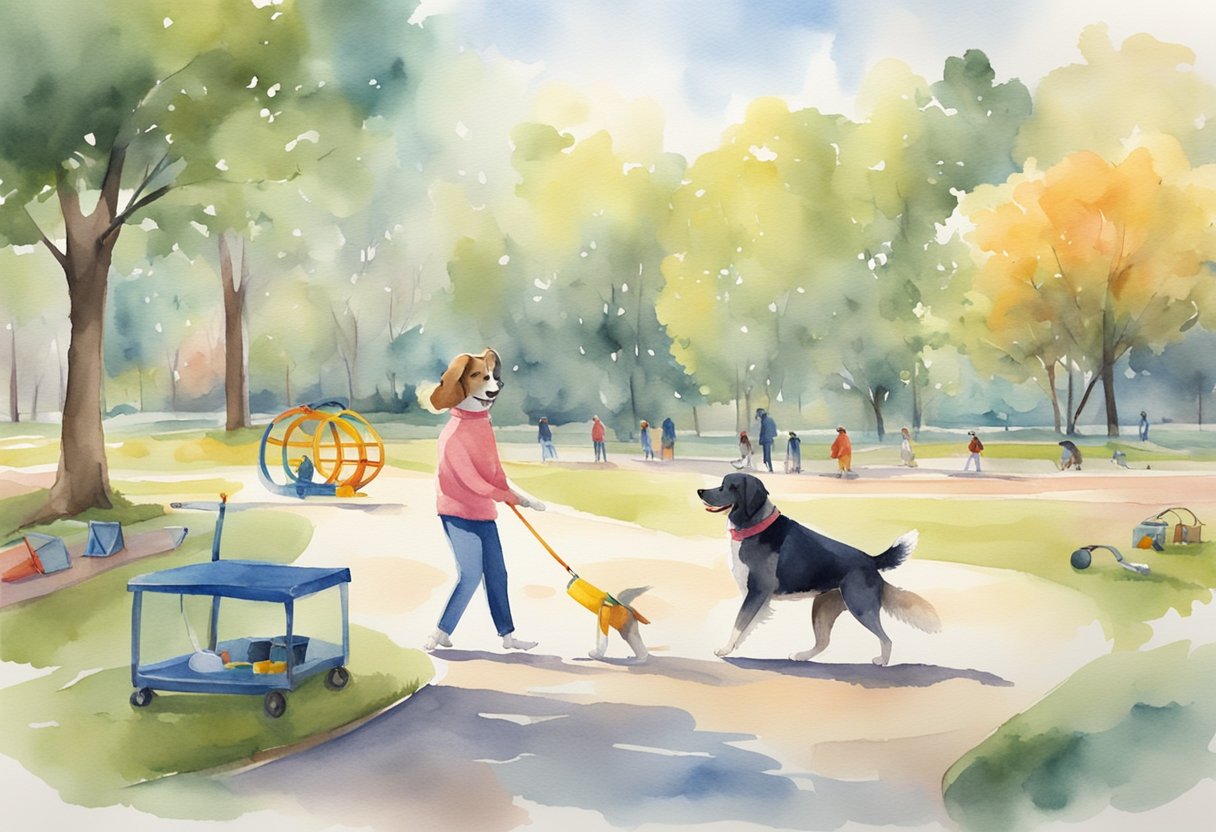
Dog training is not a one-time task but an ongoing commitment. It requires consistency and might sometimes benefit from professional help. Adopting this mindset will ensure a well-behaved and happy pet.
Maintaining Consistency in Training
Consistent training is key to successful dog training.
Establishing a daily training routine helps reinforce good behavior and makes learning a part of your dog’s daily life.
This routine should include basic commands, socialization activities, and agility exercises to keep your dog engaged.
Regularly practicing commands like “sit,” “stay,” and “come” helps reinforce these behaviors.
Consistency also involves using the same commands and reward systems to avoid confusing your dog.
Make training sessions short but frequent, adapting to fit your dog’s attention span and energy levels.
When to Consider Professional Training Help
Sometimes, despite your best efforts, certain behavioral issues may persist. This is when professional dog trainers can be invaluable.
Professionals have the experience and resources to tackle complex behavioral problems and can provide personalized training plans.
Consider seeking professional help if your dog exhibits aggression, anxiety, or other significant issues.
Trainers can offer advanced techniques and tools, such as clicker training or e-collars, to address specific problems.
They also provide an outside perspective, which can be crucial in understanding and resolving persistent issues.
Frequently Asked Questions
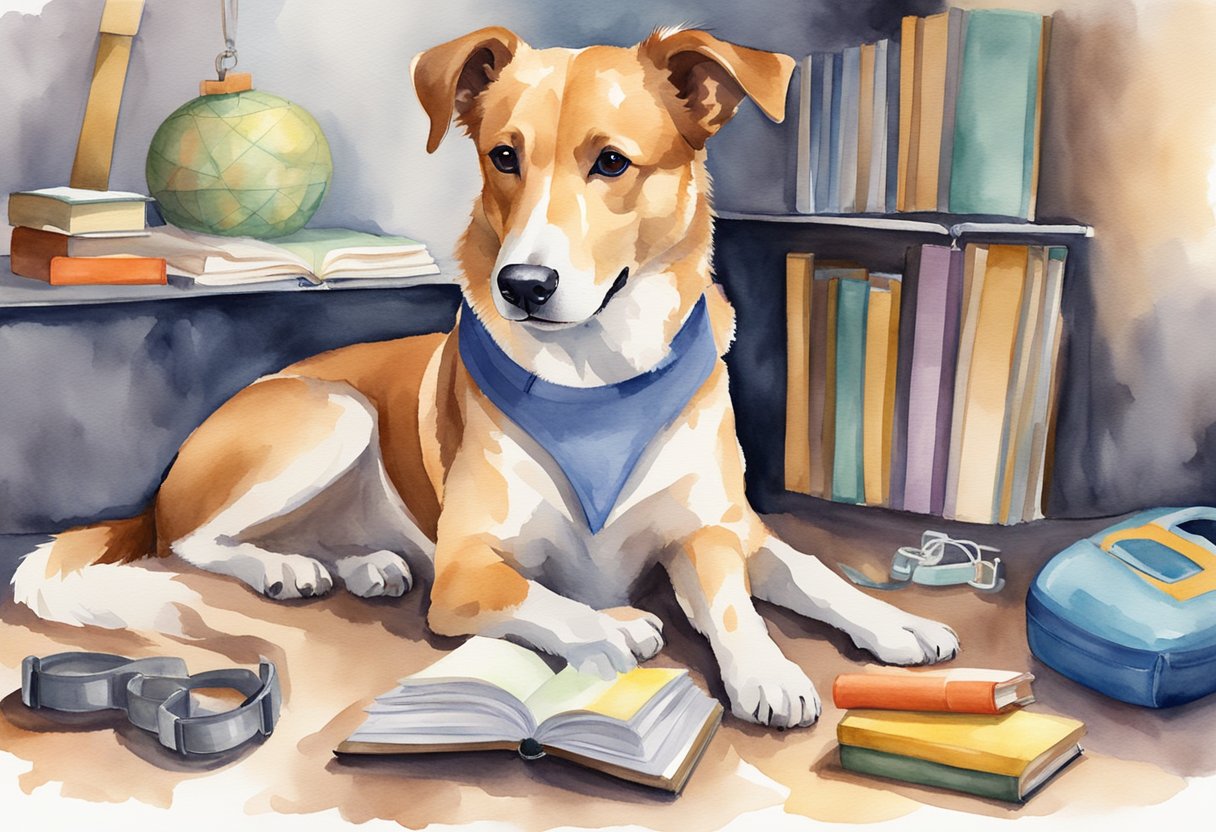
Understanding the basics of dog training can significantly improve your experience and your dog’s behavior. Here, you’ll find answers to common questions that can guide you through the process.
What are the essential commands to start with when training a new dog?
Begin with basic commands such as “sit,” “stay,” “come,” and “down.”
These commands establish a foundation for more advanced training. They are crucial for your dog’s safety and for everyday interactions.
How can I establish a basic obedience lesson plan for my dog?
Start with short, consistent sessions lasting 10-15 minutes each.
Focus on one command per session.
Gradually increase the difficulty and introduce distractions to test your dog’s understanding.
Track progress and adjust the lesson plan as needed to ensure your dog is consistently improving.
What are some effective dog training tips for first-time owners?
Use positive reinforcement like treats, toys, or praise to reward desired behaviors.
Consistency is key—practice commands regularly.
Avoid using punishments, as they can lead to fear and aggression.
Keep training sessions short and engaging to maintain your dog’s interest.
How can I train my dog to behave properly in a variety of settings?
Slowly introduce your dog to different environments and gradually increase the level of distraction.
Practice commands in various settings such as parks, streets, and indoors.
Consistent reinforcement in different contexts helps your dog generalize the behavior, ensuring they obey commands anywhere.
What materials do I need to begin training my dog at home?
You’ll need a sturdy leash, a comfortable collar or harness, and small, high-value treats.
Additionally, consider using a clicker for precise timing of rewards.
A designated training space free from distractions can also be beneficial.
Are there any key rules to follow for successful dog training?
Be patient and consistent. Always use positive reinforcement methods.
Keep communication clear and simple. Ensure training sessions end on a positive note, even if progress was minimal.
Build a trusting relationship with your dog by being understanding and dependable.

